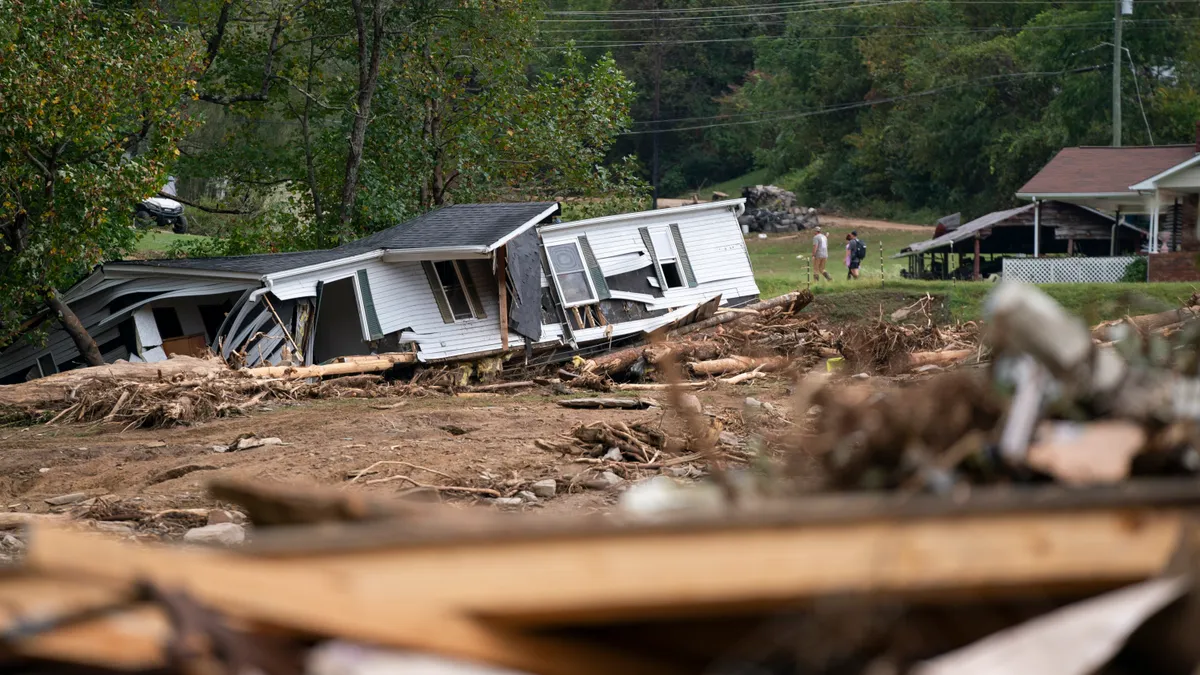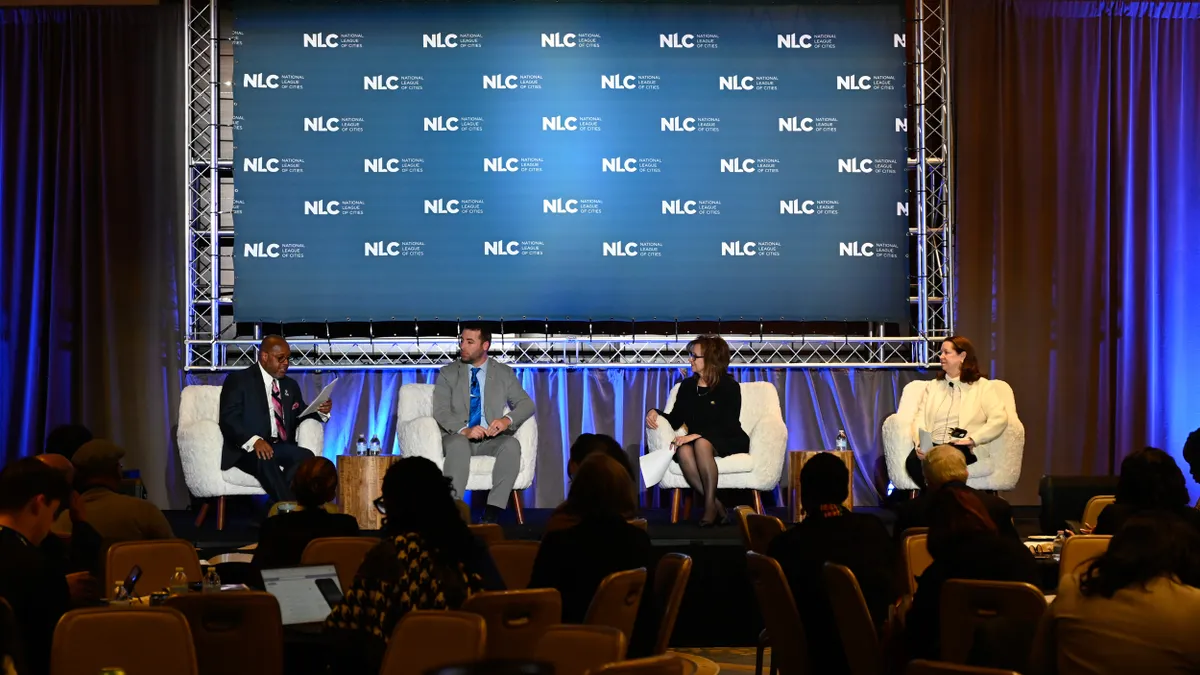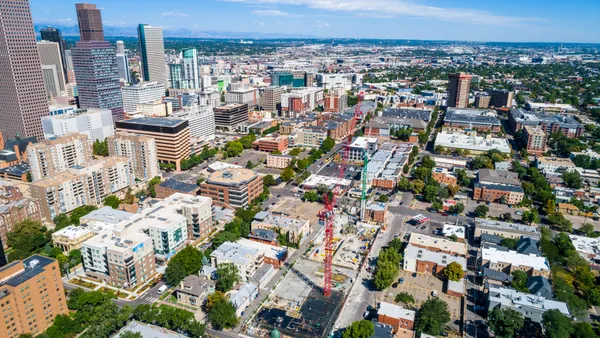Editor's note: This story is part of a series on the trends that will shape the smart cities industry in 2022.
The COVID-19 pandemic gave urban resilience work new meaning and urgency, while illuminating ways to widen its impact, according to professionals and experts who help cities pursue and complete resilience planning.
Almost a decade has passed since the now-defunct 100 Resilient Cities initiative began its efforts to seed chief resilience officers into city governments and push urban resilience planning to the fore. City officials tasked with resilience work were largely focused on preparing for and adapting to extreme weather and disasters worsened by the effects of the climate crisis.
Urban resilience can broadly mean "the capacity of a city’s systems, businesses, institutions, communities, and individuals to survive, adapt, and grow, no matter what chronic stresses and acute shocks they experience," according to Resilient Cities Network, a group that's evolved from 100 Resilient Cities. The pandemic surfaced a range of unignorable considerations for what resilience can entail — creating new opportunities, but also further exposing potential inequities as far as which communities are able to implement resilience planning going forward.
For instance, cities came face to face with the challenges of how not having enough capable, healthy people available to work can jeopardize the reliability of critical city services — be it in transit or trash collection — according to Heather Rosenberg, an associate principal who leads the resilience team in advisory firm Arup’s Los Angeles office. That experience highlighted chronic underinvestment in communities where many of those essential workers live.
"The whole awareness around who is an essential worker and what are the essential functions of our society are so much more clear and pronounced," she said.
This year has already produced numerous initiatives exemplifying the spectrum of issues cities think about under resilience. New Haven, Connecticut, for example, created a human services-focused Department of Community Resilience, focused on coordinated and data-driven approaches to issues including homelessness, substance abuse, violence prevention, re-entry initiatives after prison, and mental health services. Tempe, Arizona, officials are using coronavirus relief funds to develop a so-called resilience hub that could provide refuge for community members in the event of power loss during an extreme heatwave.
Over the last two years, certain federal action has provided new funding streams for a variety of initiatives under this broader definition of resilience. But federal officials have also recognized the challenges around distributing that support equitably.
Federal attention
Some federal support has already come through a pair of coronavirus relief packages and will continue to arrive via the $1.2 trillion infrastructure legislation that passed in November. If passed, the Build Back Better bill before the U.S. Senate could provide additional financial support. Additionally, this month a bipartisan group of senators introduced the National Climate Adaptation and Resilience Strategy Act which in part seeks to create a chief resilience officer position in the White House and aims to ensure a unified, equitable response to climate hazards across the U.S. government.
But this federal engagement is still relatively new. “For a long time, most cities in America have relied on public-private partnership, and generally the private sector, to drive transformation. And I think that's changing really quickly right now,” said Thad Pawlowski, managing director of the Center for Resilient Cities and Landscapes at Columbia University.
Emergency management funding has also placed a greater emphasis on resilience initiatives. The Biden administration doubled the federal allocation to the Building Resilient Infrastructure and Communities (BRIC) program to $1 billion for the 2021 fiscal year. That program, housed under the Federal Emergency Management Agency (FEMA), aims to shift some reactive post-disaster spending to assist state and local governments with more proactive community efforts in anticipation of hurricanes, wildfires and other costly disasters.
One key drawback was the program initially provided disproportionately more funding to well-resourced communities in coastal states, and largely left out smaller, rural communities, analysis of BRIC's first round of awardees found. Even though the overall money available is increasing this year and FEMA changed some aspects of the program's structure to address certain equity concerns, the competitive grant model can still be regressive in nature. That's according to Kristin Smith, a researcher at Headwaters Economics, a Bozeman, Montana-based nonprofit research group, who in part provides technical assistance to smaller communities seeking these opportunities.
The human resources needed to complete the application process, as well as the requirement for some level of cost-sharing commitment from cities to be eligible for grant money, will be prohibitive for some communities and exacerbate the uneven spread of resilience planning in the U.S., she said. "The places that have been leading in resilience planning I think will continue to lead," Smith said. “At the end of the day, being able to plan proactively and do resilience planning is a privilege. Most communities do not have the resources."
Adapting how to adapt
Experts emphasized that life during the pandemic put into striking relief the connected nature of cities' environmental challenges and social injustices, and city efforts ought to reflect that. The most daunting underlying problems for cities, like climate change and racism, must be addressed together, said Pawlowski. "It's not just putting an equity lens on the way that we address climate change," he said.
Cities have a lot of room to revisit their climate action plans with this in mind, said Rosenberg. Austin, Texas, for example, set a goal in 2014 to achieve net-zero greenhouse gas emissions by 2050. This past September, the city issued a climate equity plan which not only pushed up the date of that goal by a decade but also aimed to put racial equity at the forefront. The city said it sought to hear from residents about how they experienced the harms from climate change differently.
Multiple advisers in the resilience space underscored the importance of cities sharing information and learning from one another in a quickly evolving field. Additionally, Smith suggested that regional-level planning and partnerships can help extend planning opportunities and participation to communities that may otherwise lack the resources on their own. "Resilience doesn’t stop at city borders," she said.
Resilience leaders in local governments are also working to better collect and integrate data when deciding on the most multifunctional, cost-effective strategies, according to Cassandra Bhat, director of climate resilience at the ICF Climate Center. Cities are also doing a better job of drawing on census-level data, allowing officials to do things like better track who is benefiting from which services, she said. Understanding that things will continue to evolve, cities are increasingly incorporating adaptive management into planning. Further, they're setting processes that allow them to identify near-term adaptation strategies, measure what's working, and then lay a pathway to make different data-informed decisions in the future, she explained.
And as more novel strategies emerge, there remains plenty of proven, cost-effective, low-hanging fruit that cities could pursue — such as planting trees to combat urban heat, according to Bhat. "It's really important to start somewhere and not let uncertainty or the perfect be the enemy of the good."




















